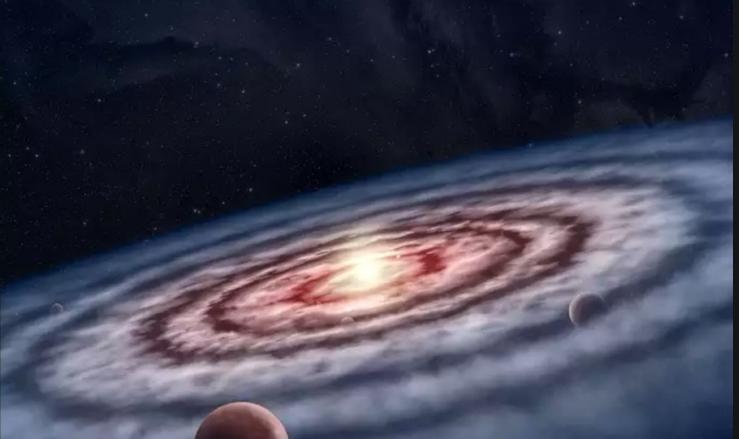Do these papers unlock the secrets of planet formation and the origin of life? Let's take a look!

As many as 20 of the latest scientific papers used data collected by a large number of radio parabolic antennas placed high in the Chilean desert to sort out the mysteries of planet formation.
The Atacama Large Millimeter/Submillimeter Array (ALMA) specializes in what scientists call a protoplanetary disk, the chaotic material that surrounds young stars and eventually gathers together to build planets. While scientists have done a lot of work to analyze exoplanets that have formed, studying protoplanetary disks also provides an opportunity to see the mixing and diffusion of all of these components.
A new set of 20 papers, published in the Astrophysical Journal Supplement Series, shares the results of a research project called "Molecules on the Planet Formation Scale (MAP) with ALMA," which utilizes high-end equipment to study protoplanetary disks.
One of the new papers depicts more than a dozen organic molecules present in five different protoplanetary disks. Scientists are particularly interested in organic molecules containing carbon, and they're trying to understand how life began.
Karin Auberge, an astrologer and map principal investigator at Harvard and the Smithsonian Center for Astrophysics (CFA), said in a statement: "These planet-forming disks are rich in organic molecules, some of which are related to the origin of life on Earth. "It's really exciting; the chemicals in each disk will ultimately affect the type of planets that form — and decide whether those planets will be able to hold life."
These maps show not only the presence of organic compounds in protoplanetary disks, but also the different distributions of these components. Thus, two planets forming in different regions of the same protoplanetary disk may end up producing very different supplies of these compounds.
Auberge said: "Our map shows that the position of the planets in the disk is very important. "Two planets may form around the same star, and their organic stocks are very different, so they are prone to life."
In addition to locating the different ingredients, the study also identified compounds constructed with deuterium, a form of hydrogen that weighs twice as much as the most common taste of this element. Studies have shown that the level of deuterium is different across the disk, with far fewer atoms closer to the star at the center of the disk.
The scientists in the study were also able to detect the earliest signs of planets merging from the disk. This is often very difficult – the same dust and debris that form the disk itself also hinders the planet's tiny nascent stages.
"It's like trying to see a fish underwater," Richard Teague said in the same statement. He is also an astronomer at the CFA and part of the Map Project. "We know they're there, but we can't look down that far. We have to look for subtle signs on the surface of the water, such as ripples and waves. ”
Another part of the map focuses on precursor material from massive Jupiter-like planets, where elements such as carbon and oxygen appear to be much rarer than compounds such as methane.
Arthur Bosman, an astronomer at the University of Michigan and lead author of one of the papers, said in a separate statement: "Our findings suggest that many gas giants may have formed in extremely oxygen-rich (carbon-rich) atmospheres, which challenges current expectations of planetary composition.""
Overall, research shows that there's a lot to be learned about what's around young stars, how planets form, and what this means for the universe and the prospects for life in the universe.
John Ilee, an astronomer at the University of Leeds in the United Kingdom and principal investigator of a new mapping study, said in a separate statement, "We hope to use ALMA to find the next stepping stone to chemical complexity in these disks." "If we detect them, then we're closer to understanding how the primordial components of life are combined around other stars."
BY: space
FY: Luo Dao
If there is any infringement of the relevant content, please contact the author to delete it after the work is published
Please also obtain authorization to reprint, and pay attention to maintaining completeness and indicating source